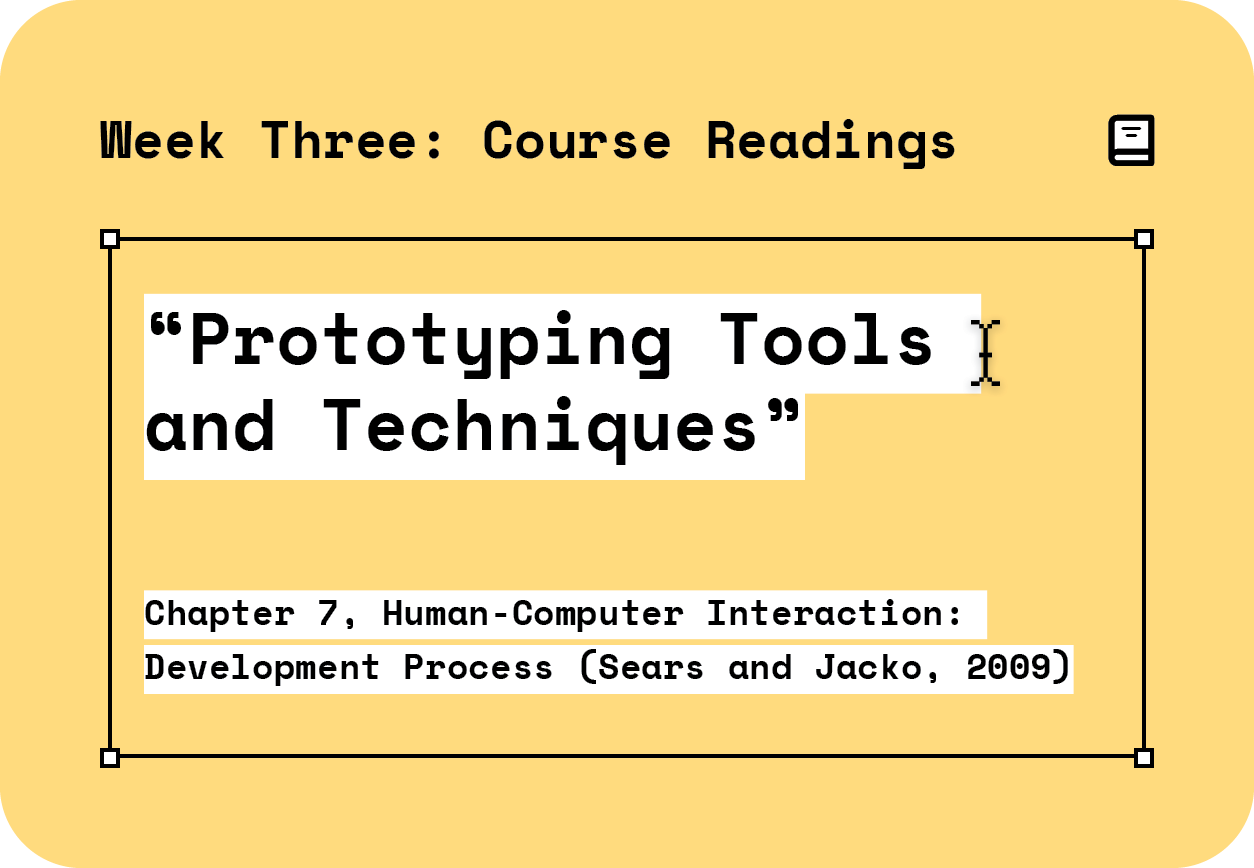This Chapter explores the use of prototypes as a means through which to develop designs through an iterative and cyclical processes as well as the techniques used to guide them. Prototypes are described as aids that designers can use to both clarify design direction as well as generate and refine new ideas. Different to how other design professions use ‘mockups’ (architecture) and ‘revisions’ (graphic design) to explore design ideas, prototyping Human-Computer-Interactions (HCI) adds the additional lens of using scientific methods to derive observations and “study the effectiveness of particular designs.”
Offline Rapid Prototyping Techniques (‘hands-on’) such as Paper + Pencil, Mockups, Wizard of Oz and Video Prototyping and Online Rapid Prototyping Techniques (‘digital’) such as Non-interactive simulations, Interactive simulations, and Scripting languages are described with insight into how these techniques can be used to aid the design process. These can vary in fidelity in terms of Representing, Precision, Interactivity, and Evolution (the lifespan of the prototype). They can also vary in terms of purpose, either being Horizontal prototypes (where an entire layer of a design is developed), Vertical prototypes (where the whole design is developed), Task-oriented prototypes (where specific parts of a design are prototyped based on function), and Scenario-based prototypes (which are based on exploring specific situations of use).
Reading: Human-Computer Interaction: Development Process (Sears and Jacko, 2009) – Ch. 7 Prototyping Tools and Techniques
Week 3 Reading: “Prototyping Tools and Techniques”
